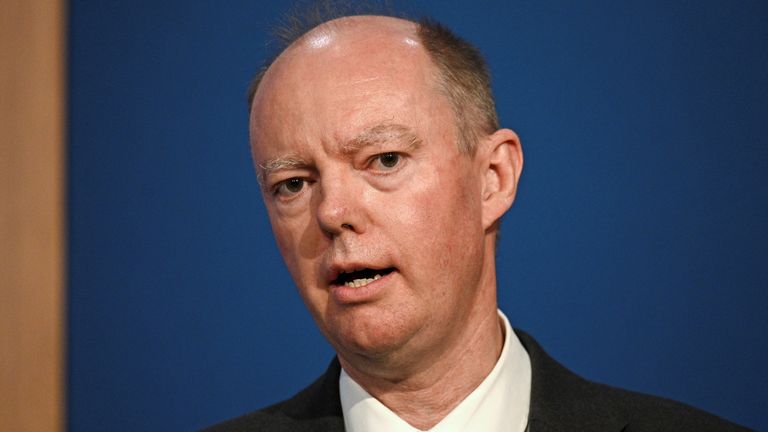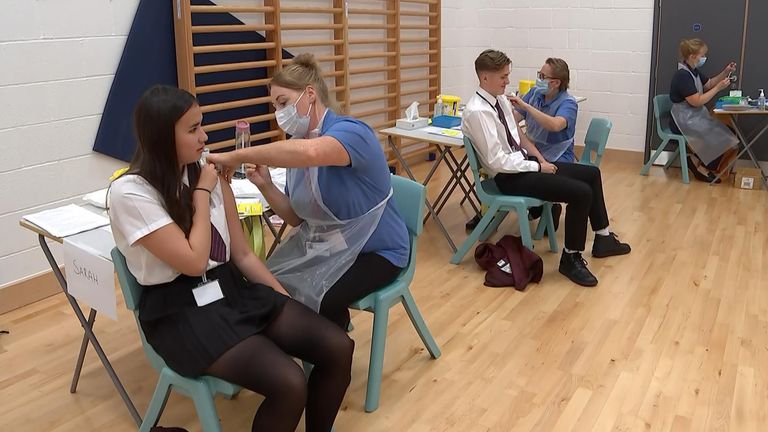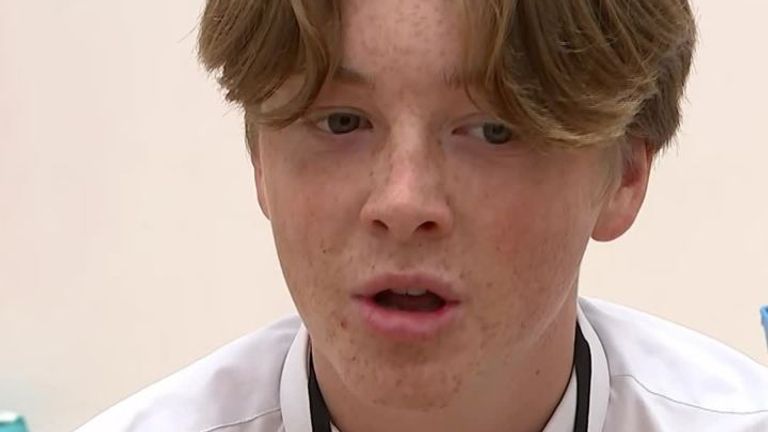Virtually any child between the ages of 12 and 15 would get COVID-19 at some point without vaccination, England’s chief medical officer has said.
Professor Chris Whitty said that the highest rate of coronavirus transmission is currently occurring in children of this age group.
Approximately half of all children have already had coronavirus during the pandemic, he added.
Speaking to a committee of MPs, he said that “there is definitely substantial transmission happening in this age group… as far as we can tell”.
“Virtually any child, unvaccinated, is likely to get an infection at some point between 12 and 15,” he said.
And on vaccinating young people, Mr Whitty said that “we are very clear this is not a silver bullet” but that it “will significantly reduce… the amount of disruption” to education.
He added: “You are not comparing a child being vaccinated against nothing happening. You are comparing a child being vaccinated against a near certainty that child will get COVID.
“Under that environment, our estimate is that probably you would have fewer days lost as a result of being vaccinated.”
Although the vaccination programme may cause some disruption to schools, it will be outweighed by the disruption if children caught COVID-19, he said.
“The great majority of children who have not currently had COVID are going to get it at some point,” he added.
“It won’t be necessary in the next two or three months but they will get it sooner or later because this is incredibly infectious… vaccination will reduce that risk.”
Follow the Daily podcast on Apple Podcasts, Google Podcasts, Spotify, Spreaker.
Also speaking about giving one dose of the Pfizer vaccine to school children, deputy chief medical officer Professor Jonathan Van-Tam said the side effects of that first dose are lower than those from a second dose.
He went on to say it is “extremely inconvenient to be laid low” by COVID-19, albeit for a small number of days.
Children aged between 12 and 15 have begun receiving a single dose of a coronavirus vaccine, following a recommendation from the UK’s chief medical officers.
The CMOs previously said they believe one jab will have a “marked effect” on classroom absences and community transmission.
Professor Whitty told MPs this decision had not been made for political reasons, or in the interests of more vulnerable adults but purely for the benefit of those aged between 12 and 15.
In cases where the child and their parents disagree over the vaccine – a situation which Professor Whitty said would be “incredibly rare” – the person administering the jab will assess if the child is deemed competent enough to make their own decision.
The President of the Royal College of Paediatrics and Child Health, Dr Camilla Kingdon, told MPs: “If the child is Gillick competent, they decide whether they do or they don’t have it.”
“Gillick competency” are guidelines used to assess whether a child has the maturity to make their own decisions and understand the implications of those decisions.
Dr Kingdon also told politicians that twice-weekly lateral flow testing of asymptomatic children should be stopped.
She said: “It’s our view that because children are so unlikely to be seriously affected by the viral infection that anything we can do to give back their normal lives – let’s face it having a swab shoved up your nose twice a week is not part of a normal life for a child. I know a lot of children who frankly loathe the experience.”
She said she wanted to move towards a place where COVID is treated like other viral infections, with unwell children encouraged to stay at home regardless of the cause.














